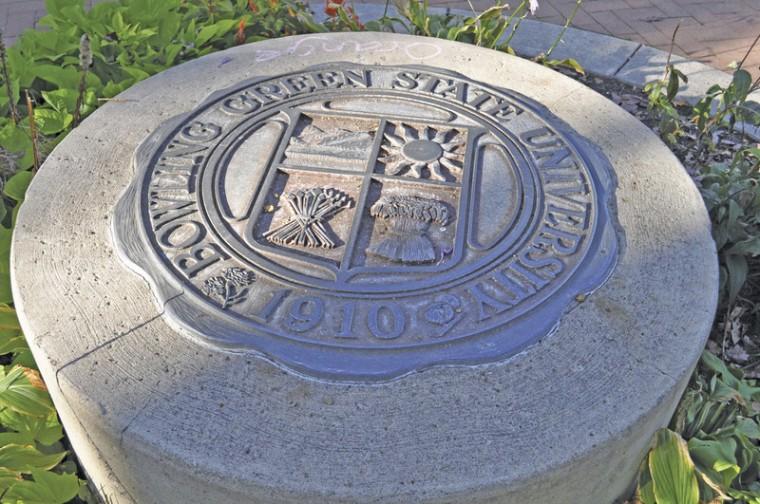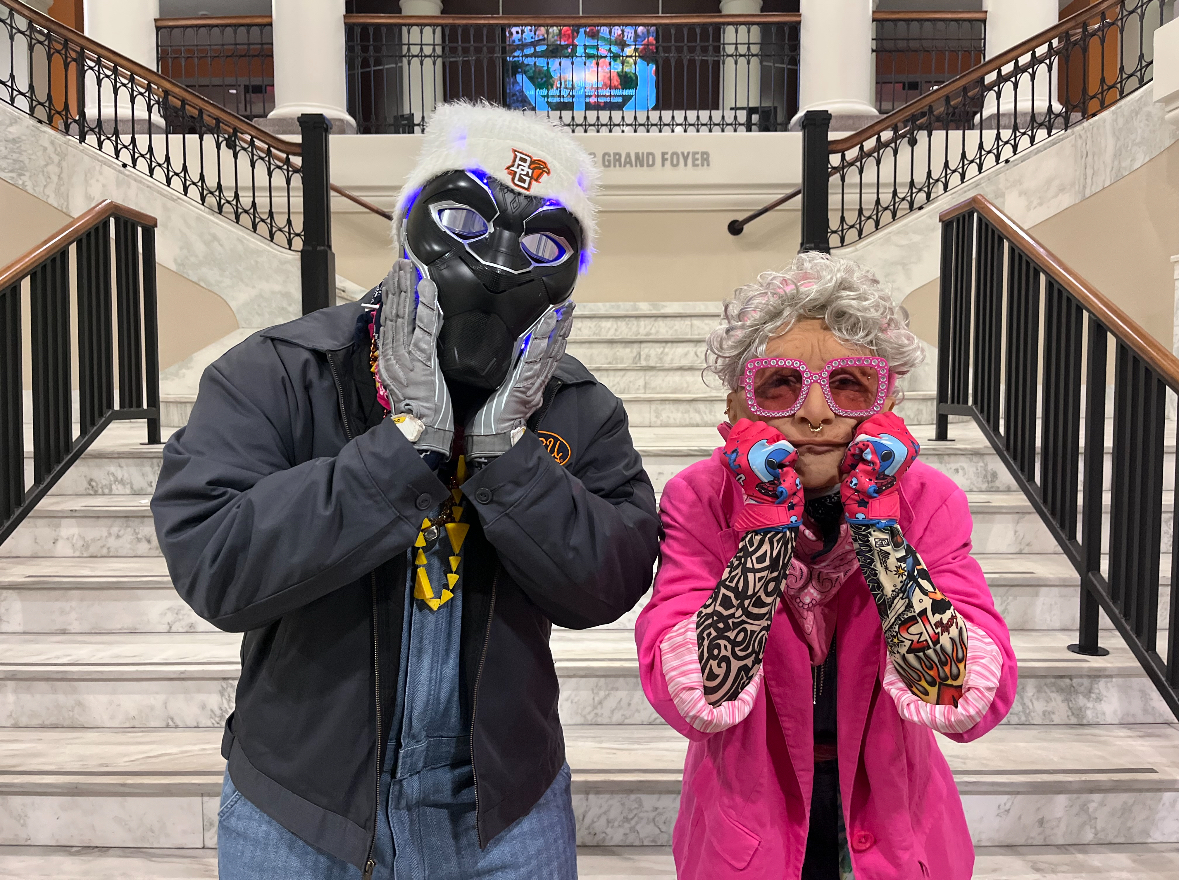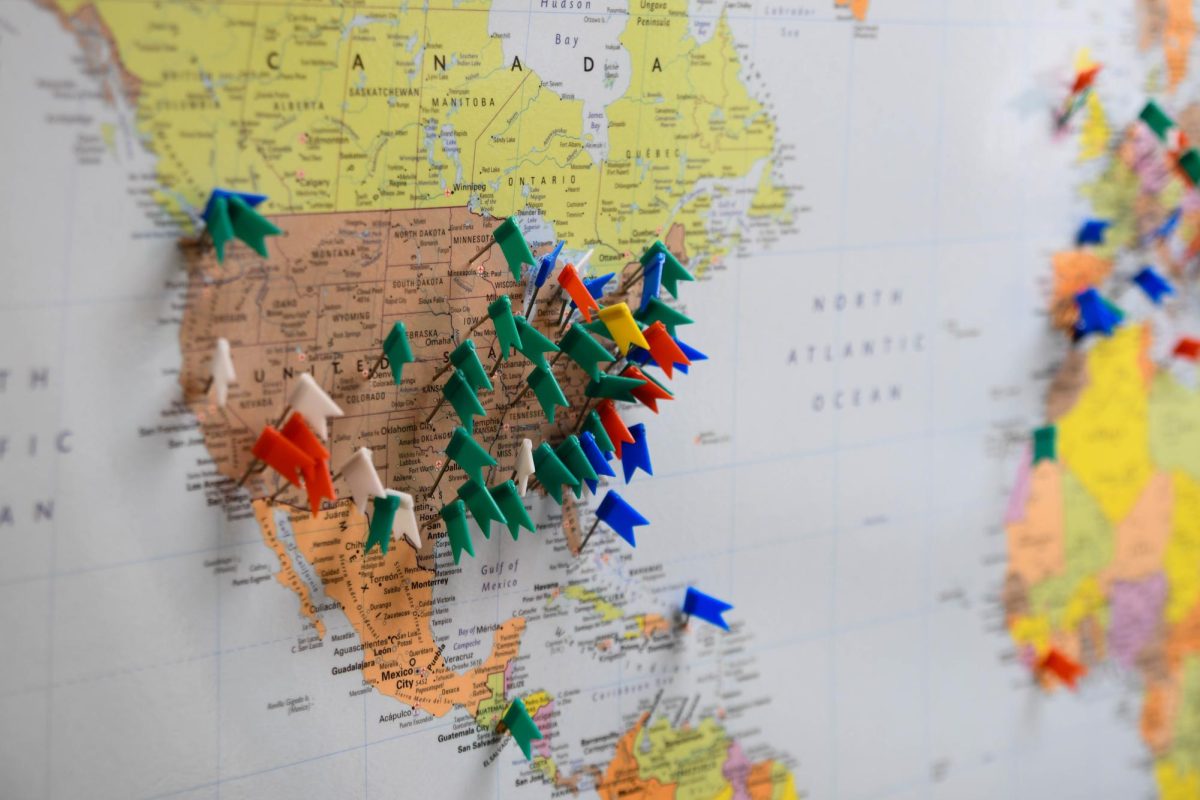My assignment for this month’s In Focus was to write an article on the myths surrounding the University seal, and find out where those myths originated. So, naturally, I took the library elevator to the fifth floor to do some research at the Center for Archival Collections.
Dana Nemeth, a staff member with the Center for Archival Collections, told me she had never known where the myths came from, but she knew some material existed about the myths and the seal. She ran a search for me to find some sources about the seal and its myths, pulled a few BG News articles and gathered old freshman handbooks and Key yearbooks. She even pulled a folder with correspondences regarding the seal, its design and its installation.
We scoured the handbooks and yearbooks, determined to find something about how these myths began.
An hour later, this is what we knew:
If you walk to the right of the seal, you are guaranteed to pass your classes but if you walk to the left you will fail your next exam.If you kiss your sweetheart on the seal under a full moon at midnight, you two will be together forever.If you and your sweetheart are holding hands and break apart to walk on opposite sides of the seal, you will break up.
Unfortunately, this was everything I knew before I started researching the seal legends, so, as far as my article went, I was purely out of luck. I made some phone calls and asked a few students — no one else knew where the myths had come from either.
Most people echoed what senior Sarah Ward said to me: “I was just always told that that’s what they are.”
Despite the setbacks trying to find the origin of the myths surrounding the seal, that failure did make me realize something — maybe myths are myths for a reason. Not knowing where those myths come from adds an air of mystery, and when it comes to myths, an air of mystery is almost like a confirmation of credibility.
Senior Timi Burkett has a friend who kissed her boyfriend at midnight on the seal under a full moon. They just got engaged this summer. Burkett has never heard where the myths came from, and wants to keep it that way.
“I think it’s kind of neat because it makes it more mysterious that we don’t know,” Burkett said. “If we knew, we would know that person made them up.”
I completely agree with her. If you knew that University President William Jerome had simply made up the myths for fun one day because he was bored in his office, would you believe them? Would you make sure you always walked to the right of the seal even if it meant cutting through a tour group? I don’t know if I would.
I’m glad I never found out where the myths came from, even if Nemeth and I were a bit disappointed. It’s almost like wanting to never find out that it was your parents all along, that Santa Claus isn’t real (my apologies to anyone who hadn’t found that out yet).
OK, so maybe it is not quite that drastic, but you get the point. There’s something magical about the myths surrounding the University seal since we don’t know where they came from. It kind of makes me want to kiss someone on the seal at midnight under a full moon and never walk to the left of it.








